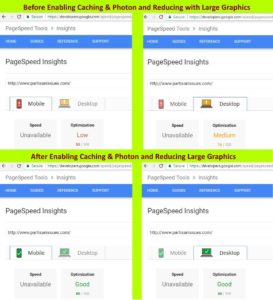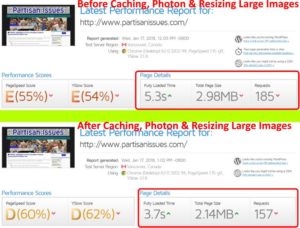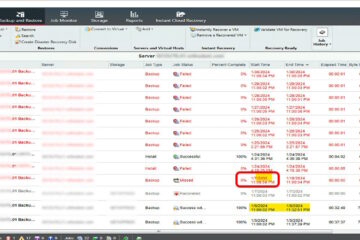 If you want your webpages to rank highly in searches, you need to ensure that your site is delivering pages quickly. Google, Bing and other search engines really care about the speed of a site and will reduce page rank due to poor site performance. Fortunately the world seems to have standardized on the WordPress platform and that means there are lots of things you can do speed up your WordPress site.
If you want your webpages to rank highly in searches, you need to ensure that your site is delivering pages quickly. Google, Bing and other search engines really care about the speed of a site and will reduce page rank due to poor site performance. Fortunately the world seems to have standardized on the WordPress platform and that means there are lots of things you can do speed up your WordPress site.
Before you make any changes you should click on both of these performance sites below and find out what your current site speed is:
You should run these tests at least 3 times and take an average because there are so many factors that go into site performance (i.e. did it need to make a DNS query, where the pages in cache, …)
Write down the resulting numbers from these sites and then make these three quick changes:
1: INSTALL A CACHING PLUGIN:
Caching plugins change your page from something that is custom built on the fly for each visitor to much faster static pages. They periodically look for changes (i.e. after a period of time or after a new page/post is created). Caching will make your site notably faster.
There are many Caching options but we have used WP SUPER CACHE for years with very few problems. Simply install the plugin, activate it, then click SETTINGS and select ENABLE CACHING on the EASY tab.
If you would like a review of 6 popular WordPress caching plugins read THIS article.
2: INSTALL A GRAPHICS ACCELERATION PLUGIN:
Graphics accelerators do three things for you:
- They compress pictures to they travel through the internet faster.
- They resize pictures to fit the screen they are being displayed on. There is no point in sending 800 x 600 size picture that looks great on a 24″ screen, to a 5″ cell phone, so most graphics accelerators will calculate the best size and send only that (maybe 400 x 300 for a 5″ cell).
- They copy the graphics from your site to a several very high performance websites around the world. These so called Content Delivery Networks (CDN’s) mean that people in Australia can have your graphics load just as fast as someone in the US. This has the added bonus of making your host server faster because it is doing less work.
For years we used a WordPress add-in named Photon. That add-in is now bundled into WordPress’ own “JetPack” bundle. To get photon running, install and activate the JetPack plugin (in the unlikely event you don’t already have it), then click JETPACK from the top left menu, select SETTINGS and then on the WRITING tab enable SPEED UP IMAGES & PHOTOS.
If you are lost, click HERE for some screen shots and another explanation of Photon.
3: REDUCE FILE SIZE OF GRAPHICS:
You likely don’t know which graphics and photos are ‘too’ large but tools like gtmetrix.com do. Just surf to gtmetrix.com type in the address of your site, click ANALYSE, then expand the OPTIMIZE IMAGES section and read what it says. This report shows you which files can be reduced and it shows you them in the order of largest to smallest change.
I don’t usually care about the ‘percentage reduction’, but I do care about the ‘could save’ size. If I see anything over 25KB, I will probably spend time working on it. If you are a novice you might see graphics and photo’s that are 1MB or 2MB and that is a killer. With few exceptions, graphics and photos on webpages should be 100KB or smaller.
If you don’t know who to reduce the graphics size, we recommend a free tool like Paint.net. Locate the graphic/photo in question, open it with Paint.net then click IMAGE > RESIZE and make it no larger than 800 x 600 pixels at 96 DPI. Then save the file as a .JPG (not a .PNG or .GIF) and set the quality slider bar (in the top left) to about 75%.
Once you have your graphics / photo’s at a reasonable size, re-import them into WordPress media and then edit the pages/posts/configuration to use those new versions of your graphics.
If you have caching turned on, flush the cache (or just turn it off and then back on) before going to the next step.
4: GET RID OF UNNECESSARY PLUGINS
Easy to install and use ‘plugins’ are one of WordPress’ greatest feature but each plug in demands CPU, memory and bandwidth resources. If you don’t absolutely need a plug in, deactivate it and uninstall it.
.
HOW MUCH BETTER IS IT?
 CRITICAL NOTE: We have found that these settings do not take effect in these test sites unless you manually bring up the page you are testing on both a cell phone and a full PC. The caching changes seem to ignore these test sites, so forcing the pages to load on your cell and PC will load up the cache so your performance results are accurate.
CRITICAL NOTE: We have found that these settings do not take effect in these test sites unless you manually bring up the page you are testing on both a cell phone and a full PC. The caching changes seem to ignore these test sites, so forcing the pages to load on your cell and PC will load up the cache so your performance results are accurate.
When you are done, rerun the tests several times on:
and see how much of an improvement you have made.
Also remember that the one that really counts in the GOOGLE site. If they think you are fast, you are probably in good shape. If Google thinks your site is slow, you will not get a good page ranking, which means you will not show up on the first page of results, which means your site is dead.
WHAT TO DO IF THE SITE IS STILL SLOW?
If after all this your site is still slow, don’t panic, call your hosting company. Sometimes the problem is on their end or they can provide you with advise on how to fix the problems on your site. We are a GoDaddy reseller and while they are nearly perfect, their SQL servers or web servers do sometimes need to be restarted to clean out zombie processes. If there is a problem, most hosts are happy to hear from you and happy to work on the problem.



0 Comments